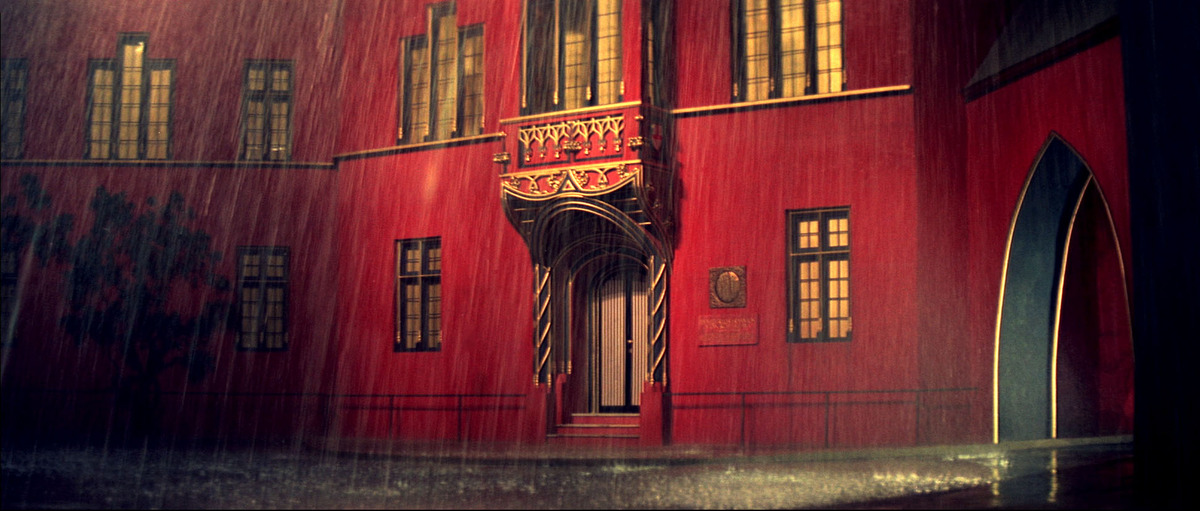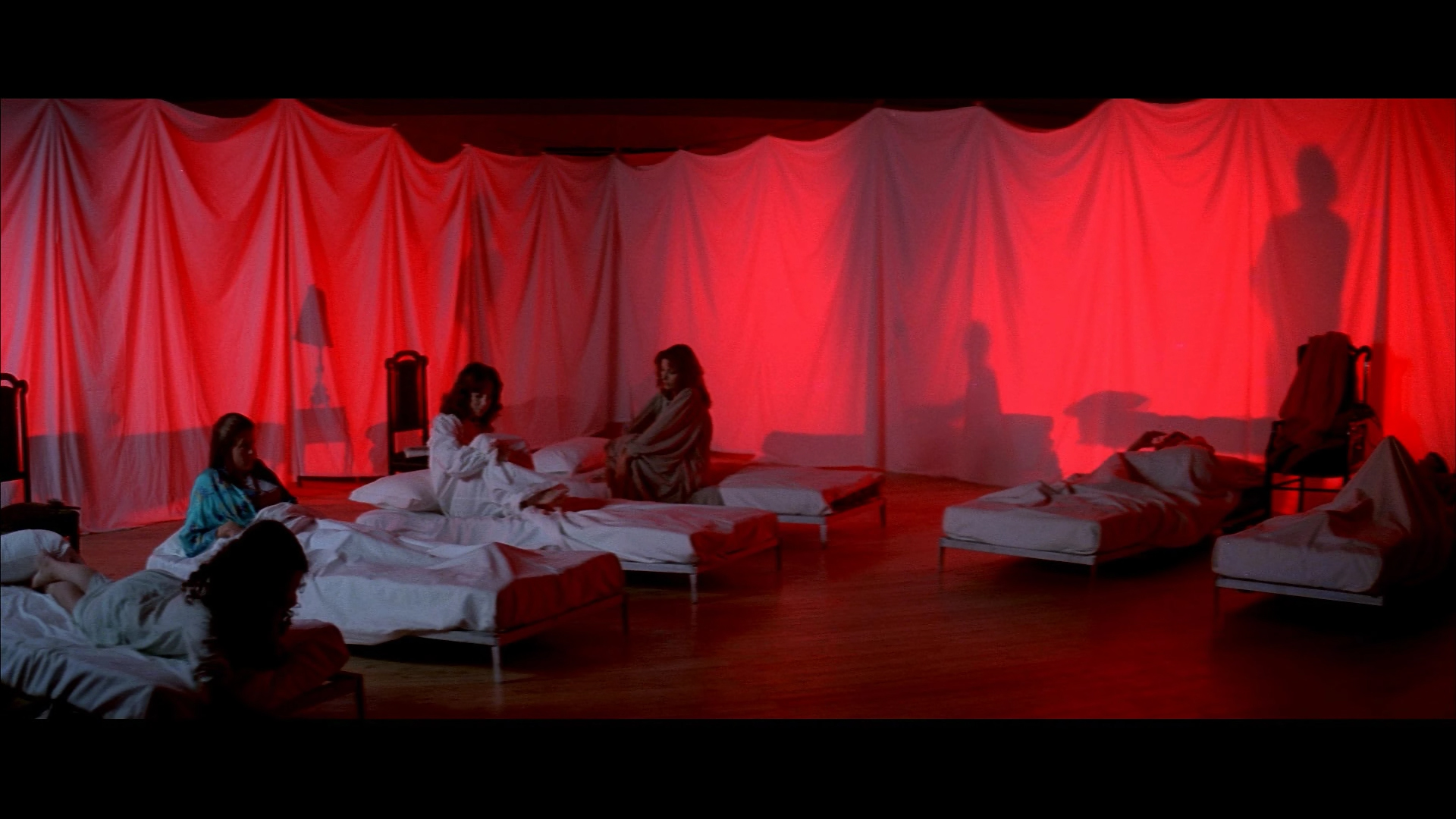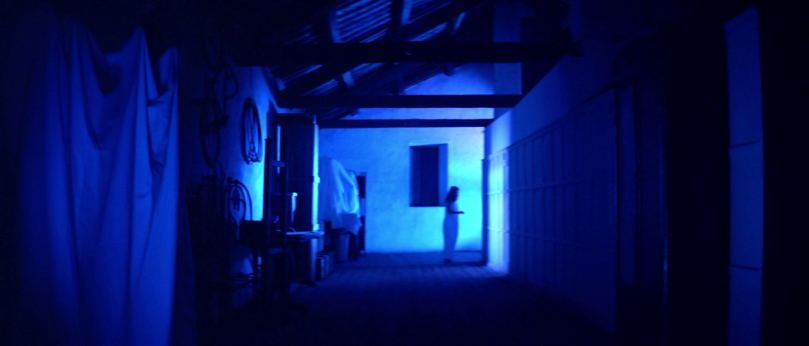Still working on this now and then. Just a bit more work and I'll be finished.
Sunday, 20 December 2015
Saturday, 19 December 2015
Film Review: La Belle et la Bête (1946)
| Fig. 1: Original Theatrical Poster |
The tale of the beauty and the beast is arguably known by most through Disney's 1991 adaption, which to this day, holds its place as the most beloved version of the story. Jean Cocteau's 1946 adaption goes back to a time before computer effects and modern cinematic make-up, and shows the magic that could still be created without features we now take for granted. "Here is a fantasy alive with trick shots and astonishing effects, giving us a Beast who is lonely like a man and misunderstood like an animal. Cocteau, a poet and surrealist, was not making a "children's film" but was adapting a classic French tale that he felt had a special message after the suffering of World War II: Anyone who has an unhappy childhood may grow up to be a Beast." (Ebert, 1999)
By far the most extraordinary feature in the film is the Beast's castle, with rose gardens, overgrown plants, statues, extravagant bedrooms and a dining room in which all the candelabra's are held by human hands (fig. 2). The eyes of the statues in the dining room follow the characters, observing, while hands from the table pour wine for Belle, and earlier her father -- it is clear from this where Disney drew inspiration for the servant characters in the 1991 film, who are all trapped in household objects, perhaps Cocteau was showing the same thing. The castle is its own world, and completely different from the one Belle knew; "the visual progression of the fable into a dream-world casts its unpredictable spell." (Crowther, 1947). The castle could be representative of The Beast; it is monstrous to look at, overgrown, broken in places, yet somehow still beautiful and mysterious. The use of human hands being part of the castle shows the conflict between the man and the beast; small glimpses of humanity within a monster.
| Fig. 2: Hands hold sconces from the walls. |
| Fig. 3 The Beast meets Belle at dinner. |
Some critics have argued that the scene where Belle and The Beast first meet has underlying erotic tones; "Before she has even seen him, she is aroused to her very depths... she toys with a knife that is more than a knife." (Ebert, 1999), "There is an obvious undercurrent of eroticism here, too. This is acknowledged finally when Beauty (Josette Day) tells the Beast (Jean Marais) "I like being afraid... with you." (Macnab, 2014). However, these modern reviews emphasise modern attitudes, they are imposing more recent concepts of underlying erotic sexuality to the film. In doing so they fail to analyse objectively. While the beast is often depicted as dominant -- often standing above belle -- to presume that this is sexual is somewhat misogynistic. As far as Belle is concerned, she is now hostage to a beast that threatened to kill her father, and is more likely concerned with what The Beast's intentions are with her. Even members of the audience will be wondering this.
While La Belle et la Bête may have once been considered a classic, it has been overshadowed by Disney's adaption, which has more appeal to modern audiences and is enjoyable for all ages. Cocteau's film is stunning in its own right, but as more and more new versions of the tale emerge, it only becomes more buried. While the 2014 remake of the film (fig. 4) was not as successful as the original, there will no doubt be another attempt in years to come.
| Fig. 4: La Belle et la Bête 2014 remake. |
Images:
Figure 1. Original Theatrical Poster (1946) [poster] At: http://theredlist.com/wiki-2-24-224-267-view-fiction-profile-beauty-and-the-beast.html (Accessed on: 02.12.15)
Figure 2. Hands hold sconces from the walls. From: La Belle et la Bête. Directed by: Jean Cocteau [Film still] France: DisCina. At: http://mediartinnovation.com/2014/08/11/jean-cocteau-mythopoeic-movies-la-belle-et-la-bete-1946/ (Accessed on 19.12.15)
Figure 3. The Beast meets Belle at dinner. From: La Belle et la Bête. Directed by: Jean Cocteau [Film still] France: DisCina. At: http://theredlist.com/wiki-2-24-224-267-view-fiction-profile-beauty-and-the-beast.htm (Accessed on 17.12.15)
Figure 4. La Belle et la Bête 2014 remake. [poster] At: http://www.bleedingcool.com/2013/09/28/first-poster-for-la-belle-et-la-bete-starring-vincent-cassel-and-lea-seydoux/ (Accessed on: 19.12.15)
Figure 4. La Belle et la Bête 2014 remake. [poster] At: http://www.bleedingcool.com/2013/09/28/first-poster-for-la-belle-et-la-bete-starring-vincent-cassel-and-lea-seydoux/ (Accessed on: 19.12.15)
Bibliography:
Ebert, R. (1999) 'Beauty and the Beast'. In: rogerebert.com 26.12.1999. [online] At: http://www.rogerebert.com/reviews/great-movie-beauty-and-the-beast-1946 (Accessed on: 17.12.15)
Macnab, G. (2014) 'La Belle Et La Bete: Film review - Cocteau's Forties fantasy is still a thing of real beauty'. In: The Independent 02.01.14 [online] At: http://www.independent.co.uk/arts-entertainment/films/reviews/la-belle-et-la-bete-film-review-cocteaus-forties-fantasy-is-still-a-thing-of-real-beauty-9035506.html (Accessed on: 19.12.15)
Macnab, G. (2014) 'La Belle Et La Bete: Film review - Cocteau's Forties fantasy is still a thing of real beauty'. In: The Independent 02.01.14 [online] At: http://www.independent.co.uk/arts-entertainment/films/reviews/la-belle-et-la-bete-film-review-cocteaus-forties-fantasy-is-still-a-thing-of-real-beauty-9035506.html (Accessed on: 19.12.15)
Crowther, B. (1947) 'La Belle et la Bete (1946) THE SCREEN IN REVIEW'. In: The New York Times 24.12.1947 [online] At: http://www.nytimes.com/movie/review?res=9B03EFD71E3EEE3BBC4C51DFB467838C659EDE (Accessed on: 19.12.15)
Friday, 18 December 2015
Personal Work: Fallout
Monday, 14 December 2015
Personal Work: Observational Drawing
Saturday, 12 December 2015
Friday, 11 December 2015
Wednesday, 9 December 2015
What If? Metropolis: Finished Buildings in Maya
All buildings will need further tweaking in order to match the concept art, which will be done as I place them all in a scene together.
Saturday, 5 December 2015
Film Review: Suspiria (1977)
| Fig. 1: Original theatrical poster. |
Dario Argento's Suspiria (1977) is a visually stunning film that uses colour and terrifying music to create some amazingly atmospheric scenes. The film has barely any plot, but the set is so intriguing that it's mostly unnoticeable. The colours, set, music and acting are sometimes so over dramatic that the film feels more like a stage production. "Dario Argento has an unusually horrific slant on life, to say the very least, and his film's most powerful moments have a way of making one think about open-heart surgery." (Maslin, 1977)
Suzy's arrival in Germany shows her stepping into a new and horrifying world, "Like a ballerina leaving the safety of her music box" (Gonzalez, 2001). The most prevalent colour throughout the film, red, is seen in the airport from the beginning; the light as Suzy walks in (fig. 2), the clothes of a few people walking behind her (fig. 4), the posters for the ballet school and a woman leaving the airport are all red. Red is considered a sensual colour, is thought to symbolise anger or danger, and is also the colour of blood. In many ways, the use of red during Suzy's arrival foreshadows much of what she is going to experience at the academy. The colour blue is often considered a calm colour, but in Susperia, it is a blue flower that will open the passage to the witch's room, and for much of the film blue is used to create the illusion of safety. It is also worth noting, that a woman walking next to Suzy in the airport appears to be wearing a red top with blue flowers. "The safety of the Freiburg airport gives way to the psychedelic terror of the Academy, where Suzy has been propelled into Alice's terrifyingly colorful rabbit hole." (Gonzalez, 2001)
Red is often used to signify a dangerous area, while blue does the same but seems to draw out the suspense more. Blue areas are often suggested to be calmer and less dangerous, a place where the victim that the film is focusing on is watched for some time before eventually being attacked. For the taxi journey to the academy, Suzy is lit by a red light on one side, and a blue light on the other (fig. 5), suggesting that she has entered somewhere dangerous, and that she is being observed already.
| Fig. 4: People in red walk behind Suzy. |
 |
| Fig. 5: Suzy in the taxi. |
 |
| Fig. 6: Academy exterior. |
| Fig. 7: Main entrance. |
The exterior of the academy is gold and red (fig. 6), and decorated in a way that feels both regal and threatening. The pattern of using red and blue continues into the building, with a large navy blue entrance hall (fig. 7) and red corridors. Even rooms that are not one of these colours will at some point be lit by a red or blue light to create atmosphere. In fact, seeing the rather bare rooms the pupils at the academy stay in in their original colours seems more out of place than the dramatic lighting, as the audience grows used to the unnatural light and dramatic architecture.
The attic is constantly lit by blue light, the hall the girls sleep in after the incident with the maggots is surrounded by sheets lit by a bright red light (fig. 8), and so on. Whenever an unlit room is entered, it's almost a guessing game to see which colour will be chosen. Later in the film, when Suzy leaves the academy to speak with Dr. Frank Mandel, seeing the "normal" outside world seems almost shocking, as spending so much time in the academy makes you forget the real world exists.
 |
| Fig. 8: Sleeping in the hall. |
 |
| Fig. 9: The attic. |
| Fig. 10: Yellow stained glass in the ceiling of an apartment block. |
| Fig. 11: Similar yellow stained glass in the academy. |
Green and yellow are rarely used colours, and only appear a few times in the film, with green mainly appearing in Suzy's room, and yellow being prominent towards the end, as well as appearing in some architecture against red and blue (fig. 10 & 11). The stained glass follows the colour scheme of the three flowers above the entrance to the witch's room (red, blue and yellow), but there is little to show what the colour green symbolises. It may have something to do with Suzy's consciousness, as there is a scene where only the tray of food is lit by green, while the rest of the room is not. Later, when Suzy is asleep, the entire room is green (fig. 12). It is also worth noting, when Suzy throws away the meal sent up to her, the room is lit by blue instead. So perhaps green represents lack of consciousness or awareness, as the scene in the changing room show many of the other girls at the academy wear green robes (fig. 13), perhaps showing their lack of knowledge of what happens at the academy. Of course, it's possible green has no significance at all, but with how rarely it shows up, it doesn't seem entirely wrong to assume it must symbolise something.
 |
| Fig. 12: Green room. |
 |
| Fig. 13: Green robes. |
Suspiria is more a visual film than a story based one, and there's not much of a plot; "An American goes to a Frieberg dance academy, finds that people have a habit of vanishing or getting killed in unusual circumstances, discovers it's all down to an ancient coven of witches and burns the place to the ground. And there you have it." (Smith, 2000). Suzy and Sarah talk in whispers for the majority of the film, which despite making the film difficult to understand, adds to the intensity and shows Sarah's paranoia. Suzy, however, doesn't seem entirely convinced something strange is happening until Sarah's disappearance, which pushes her to investigate further. Suzy was of course drugged during most of her meetings with Sarah, which happened at night after her evening meal, so it's not surprising she didn't want to be involved in Sarah's investigations straight away, especially after moving to a new place where she would already feel vulnerable.
There is some suggestion that the students at the academy are being manipulated into joining the coven. Though the audience never sees what happens to Mark and Olga, they are both suspicious characters. Mark works for the academy to pay off the money he owes, and lies about Sarah's disappearance, saying he heard her leave. Olga, at first, simply appears to be mean spirited, but clearly has some kind of relationship with Mark. After letting Suzy stay in her apartment for a night, she is quick to have Suzy's things moved back to the academy once she falls ill, and the two girls are never seen interacting again. Olga is also seen painting her nails red - the colour of danger (fig.14). Suzy's sudden illness is the work of the witches, who after discovering she saw the murdered girl leaving the academy, wish to monitor her, so the illness keeps her in the academy and gives them the opportunity to drug her.
Despite the lack of plot, the set design and imagery make Suspiria fantastic to watch, and incredibly memorable; ""Suspiria" is really quite funny, during those isolated interludes when nobody is bleeding." (Maslin, 1977). It is truly a "deliriously artificial horror film" (Gonzalez, 2001), and shows a more creative side to the horror genre.
 |
| Fig. 14: Olga paints her nails. |
Despite the lack of plot, the set design and imagery make Suspiria fantastic to watch, and incredibly memorable; ""Suspiria" is really quite funny, during those isolated interludes when nobody is bleeding." (Maslin, 1977). It is truly a "deliriously artificial horror film" (Gonzalez, 2001), and shows a more creative side to the horror genre.
Images:
Figure 1. Original theatrical poster. (1977) [poster] At: http://www.moviepostershop.com/suspiria-movie-poster-1977 (Accessed on: 01.12.15)
Figure 2. Opening scene in the airport. (1977) From: Suspiria. Directed by: Dario Argento [Film still] Italy: Seda Spettacoli. At: https://www.youtube.com/watch?v=DYA_oXfMhVo (Accessed on: 02.12.15)
Figure 3. Opening scene in the airport. (1977) From: Suspiria. Directed by: Dario Argento [Film still] Italy: Seda Spettacoli. At: https://www.youtube.com/watch?v=DYA_oXfMhVo (Accessed on: 02.12.15)
Figure 4. People in red walk behind Suzy. (1977) From: Suspiria. Directed by: Dario Argento [Film still] Italy: Seda Spettacoli. At: http://backgroundartists.tumblr.com/tagged/Dario-Argento (Accessed on: 02.12.15)
Figure 5. Suzy in the taxi. (1977) From: Suspiria. Directed by: Dario Argento [Film still] Italy: Seda Spettacoli. At: http://www.filmgumbo.com/2012/03/friday-scene-opening-scene-from.html (Accessed on: 02.12.15)
Figure 6. Academy exterior. (1977) From: Suspiria. Directed by: Dario Argento [Film still] Italy: Seda Spettacoli. At: https://espacedeguiguillaume.wordpress.com/2015/05/03/redecouverte-suspiria/ (Accessed on: 05.12.15)
Figure 7. Main entrance. (1977) From: Suspiria. Directed by: Dario Argento [Film still] Italy: Seda Spettacoli. At: http://michaelbruce.fr/suspiria/ (Accessed on: 05.12.15)
Figure 8. Sleeping in the hall. (1977) From: Suspiria. Directed by: Dario Argento [Film still] Italy: Seda Spettacoli. At: https://tommygirard.wordpress.com/tag/suspiria/ (Accessed on: 05.12.15)
Figure 9. The attic. (1977) From: Suspiria. Directed by: Dario Argento [Film still] Italy: Seda Spettacoli. At: https://blautoothdmand.wordpress.com/2015/10/30/the-expressionistic-goth-horror-of-suspiria/ (Accessed on: 05.12.15)
Figure 10. Yellow stained glass in the ceiling of an apartment block. (1977) From: Suspiria. Directed by: Dario Argento [Film still] Italy: Seda Spettacoli. At: http://screenmusings.org/movie/blu-ray/Suspiria/pages/Suspiria-021.htm (Accessed on: 05.12.15)
Figure 11. Similar yellow stained glass in the academy. (1977) From: Suspiria. Directed by: Dario Argento [Film still] Italy: Seda Spettacoli. At: http://carcharias-criticalmass.blogspot.co.uk/2014/01/suspiria-movie-review.html (Accessed on: 05.12.15)
Figure 12. Green room. (1977) From: Suspiria. Directed by: Dario Argento [Film still] Italy: Seda Spettacoli. At: http://antagonie.blogspot.co.uk/2012/10/the-color-of-fear-suspiria-gallery.html (Accessed on: 06.12.15)
Figure 13. Green robes. (1977) From: Suspiria. Directed by: Dario Argento [Film still] Italy: Seda Spettacoli. At: http://crazycraig524.com/2013/10/19/19-suspiria-1977/ (Accessed on: 06.12.15)
Figure 14. Olga paints her nails. (1977) From: Suspiria. Directed by: Dario Argento [Film still] Italy: Seda Spettacoli. At: https://borntobeunicorn.wordpress.com/2014/11/13/suspiria-1977/ (Accessed on: 06.12.15)
Bibliography:
Gonzalez, E. (2001) 'Suspiria' In: Slant Magazine 27.08.01 [online] At: http://www.slantmagazine.com/film/review/suspiria (Accessed on: 06.12.15)
Maslin, J. (1977) ''Suspiria,' a Specialty Movie, Drips With Gore' In: The New York Times 13.08.77 [online] At: http://www.nytimes.com/movie/review?res=990CEFDB1F3BE334BC4B52DFBE66838C669EDE (Accessed on: 06.12.15)
Smith, A. (2000) 'Suspiria Review' In: Empire 01.01.2000 [online] At: http://www.empireonline.com/movies/suspiria/review/ (Accessed on: 06.12.15)
Friday, 4 December 2015
Dancer Animation WIP 3
Wednesday, 2 December 2015
Subscribe to:
Comments (Atom)





























